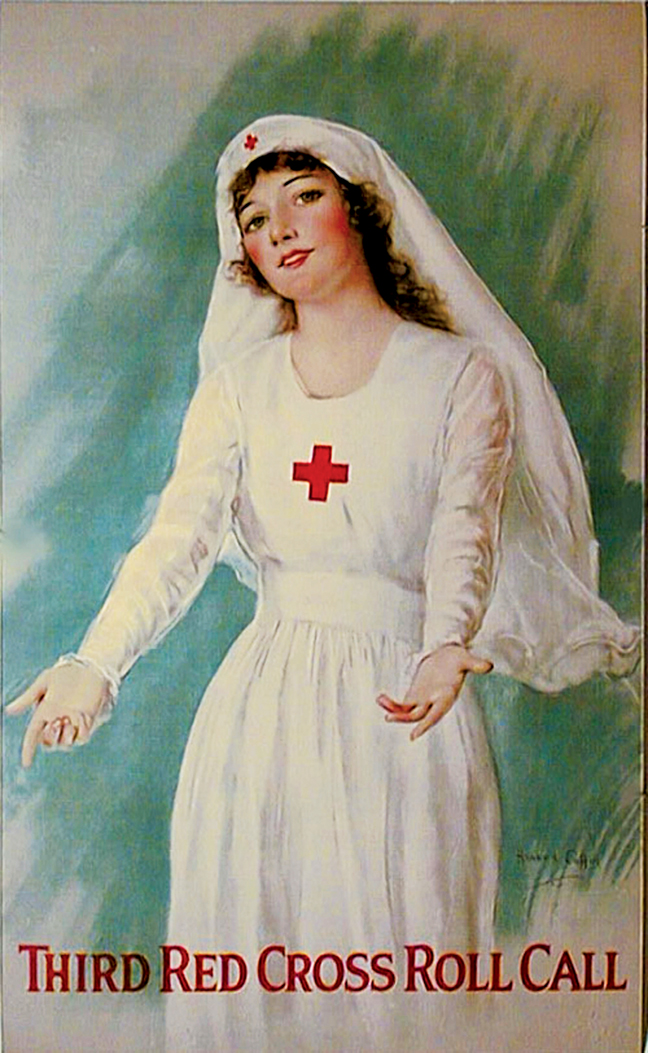The Red Cross In New Hampshire 100 Years Ago



Contributing Writer
As the year 1918 gave way to the new year of 1919, one hundred years ago, the American Red Cross was very much in the news as the organization tried to assist United States soldiers and others who were adversely affected by the war. The armistice had been agreed upon, but the impact of war is often long lasting.
The U.S. Army in Germany was now an army of occupation and restrictions on “German enemy aliens” in the United States were lifted and Germans in the country would no longer have to get permission for a change of residence. Military men, some of them wounded, were returning to the States and the country was returning to a post-war economy expecting an era of peace and prosperity, and the Red Cross was seeking to help with a mammoth effort to enlist members.

There seemed to be some concern that the American Red Cross would be so involved in assisting European countries recover from the war years that assistance at home would take a second place position. A newspaper report stated that a model farm had been established by the Red Cross at Courbet, France because it was found that farm work was one of the best ways to help soldiers suffering from shell shock to recover. A farm of 500 acres had been chosen as the location to use methods similar to those in the western United States. The newspaper said “Since these farms will be worked almost entirely by the convalescent soldiers and those made unfit for active service, the expense for maintenance will be very little. But the saving of human life will be enormous. And every farmer in this country who enrolls in the Christmas Red Cross Roll call will be helping indirectly to carry on this reconstruction work among the mutilated soldiers in France.”
The goal of the New England division of the Red Cross in 1918 was to have almost every citizen enrolled as a member of the organization and the leaders anticipated that there would be questions concerning the intentions of the Red Cross concerning relief efforts in Germany and Austria. It was thus declared that any relief work in those two countries would be limited to our own troops there, and that the U.S. government had ruled that residents could not benefit from the American Red Cross at that time.
The organizations “first thought and care” was stated to be our own soldiers, but, then, there was said to be an “almost limitless” amount of help needed by our Allies. It was stated that the nation’s Red Cross would abide by the American people’s desire that they follow the Stars and Stripes.
Every person enrolling in Red Cross during its membership drive in 1918 was to be given a 1919 membership button. Though my limited research indicates that New Hampshire did not become greatly involved in the Red Cross until the year 1917, it appears that it was very much involved two years later. The membership fee was one dollar for a year’s enrollment, but the December, 1918 drive was reportedly to be the last one for a long time; however, half of each Red Cross membership donation was kept by the local chapter to be used to help people from its location. The flag of the organization was said to have been displayed in homes and businesses across the country.
Newspaper accounts from New Hampshire towns, even after the World War I was over, carried accounts of Red Cross meetings and the projects being undertaken to help soldiers and their families. The Home Service Department of the Red Cross offered advice to returning servicemen on how to maintain benefits available to them by the government.
New Hampshire enrolled 115,000 members in 1918 with the town of Lincoln taking the honors for having the highest percentage of its residents becoming Red Cross members with at least 66 per cent of the population participating. Campton enrolled 60 per cent of its population and Tilton 40 percent. Lincoln and Campton were in the district which was chaired by Fletcher Hale of Laconia.

There was another war in progress as the year 1943 gave way to 1944 and the advertisements in the Laconia Evening Citizen made reference to the struggles of World War II and the local merchants anticipation of victory and peace. The Lougee-Robinson Company ad spoke of “…the ending of an old year, and the dawning of a new year- made more significant because of the turmoil we’re in- because we realize more than ever how fortunate we as Americans are.”
The company expressed thanks for its customers being patient when they sometimes had to wait months for what they wanted. Henry’s Dry Cleaning on Pleasant Street urged readers to buy war bonds for victory and Baker’s Remnant Store on Main Street was hoping for a “1944 victory”, saying that 1944 and victory “Look So Well Together.”
Cormier Hosiery Mills placed a full page ad proclaiming that the New Year looked bright for America, Laconia and for Cormier , announcing that they were moving to larger quarters on Union Avenue in 1944. After starting with four employees five years previously, Cormier Mills was employing more than 75 men and women and had produced, since Pearl Harbor, “hundreds of thousands of hose for our armed forces.”
The Red Cross actually began in Europe, but the American Red Cross was organized in 1881 to supply aid to military men and women as well as to provide disaster relief. Founder Clara Barton was a self-taught nurse who had ministered to soldiers in the Civil War. Food parcels were distributed to Prisoners of War in both World Wars, though those running eastern prisons during World War II did not cooperate with the Red Cross as well as those in the West.
Though just a youngster in 1944, I remember the Red Cross drives to raise funds to support relief efforts during the war, and, if my memory serves me correctly, membership cards were given to donors.
Going back to the World War I and after drive, it was reported that on February 28, 1919 there were 20 million adult members of the American Red Cross and 11 million junior members. Certainly New Hampshire citizens contributed enthusiastically and also benefited greatly from the work and assistance of the Red Cross, particularly during those war years.
Robert Hanford Smith welcomes your comments at danahillsmiths@yahoo.com.



